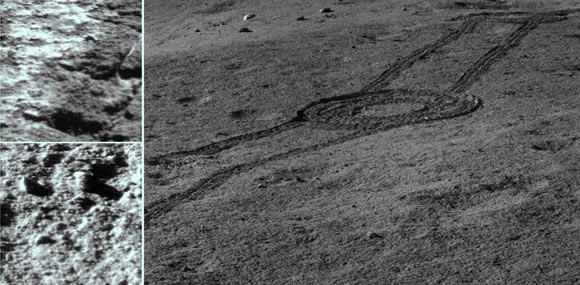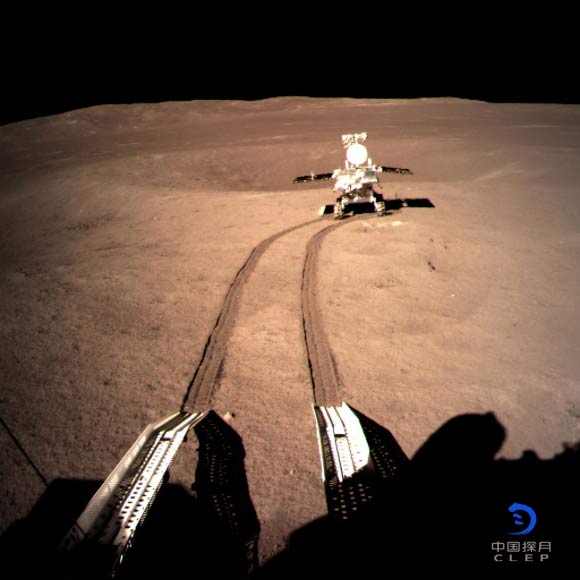China’s Chang’E-4 lander recently touched down in Von Karman — a 112-mile (180 km) wide crater located within an even larger impact crater known as the South Pole-Aitken basin — and deployed its rover, Yutu-2. Now the rover has found mantle-derived material on the floor of Von Karman crater.

This image captured by Chang’E 4 lander shows the landscape near the landing site. Image credit: NAOC / CNSA.
“A theory emerged in the 1970s that in the Moon’s infancy, an ocean made of magma covered its surface,” said Professor Chunlai Li, a researcher at the National Astronomical Observatories of Chinese Academy of Sciences and colleagues.
“As the molten ocean began to calm and cool, lighter minerals floated to the top, while heavier components sank. The top crusted over in a sheet of mare basalt, encasing a mantle of dense minerals, such as olivine and pyroxene.”
“As asteroids and space junk crashed into the surface of the Moon, they cracked through the crust and kicked up pieces of the lunar mantle.”
“Understanding the composition of the lunar mantle is critical for testing whether a magma ocean ever existed, as postulated. It also helps advance our understanding of the thermal and magmatic evolution of the Moon.”
On January 3, 2019, Chang’E-4 safely landed on the floor of Von Karman crater and then released Yutu-2 rover.
New measurements from the Visible and Near Infrared Spectrometer onboard Yutu-2 suggest the presence of two lunar mantle minerals — pyroxene and olivine — at the site.
“Yutu-2 collected spectral data from the flat stretches of the basin, as well as from other, smaller but deeper impact craters within the basin,” the scientists said.
“We expected to find a wealth of excavated mantle material on the flat floor of the South Pole-Aitken basin, since the originating impact would have penetrated well into and past the lunar crust.”
“Instead, we found mere traces of olivine, the primary component of the Earth’s upper mantle.”
“The absence of abundant olivine in the South Pole-Aitken interior remains a conundrum. Could the predictions of an olivine-rich lunar mantle be incorrect?”
“Not quite. As it turns out, more olivine appeared in the samples from deeper impacts. One theory is that the mantle consists of equal parts olivine and pyroxene, rather than being dominated by one over the other.”
“Yutu-2will need to explore more to better understand the geology of its landing site, as well as collect much more spectral data to validate its initial findings and to fully understand the composition of the lunar mantle.”
The findings appear in the journal Nature.
_____
Chunlai Li et al. 2019. Chang’E-4 initial spectroscopic identification of lunar far-side mantle-derived materials. Nature 569: 378-382; doi: 10.1038/s41586-019-1189-0








